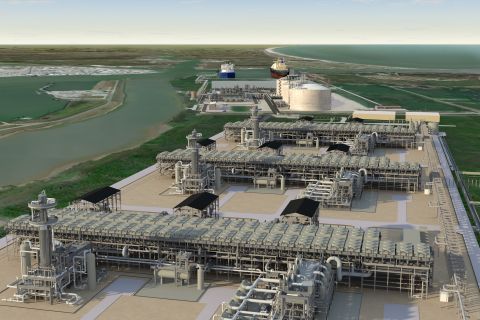LONDON—Strong global demand for oil and gas will shift in the next five years toward petrochemicals and away from motor fuels gasoline and diesel, the International Energy Agency (IEA) said March 5.
Demand for products ranging from fertilizers to plastics and beauty products will drive roughly a quarter of the expected oil demand growth to 2023, the IEA said in its five-year outlook.
The shift represents a major challenge to the oil industry, as many of the petrochemicals will be produced using gas, cutting out refineries. At the same time, growth in gasoline and diesel usage will be held back by fuel efficiency improvements and declining consumption in the developed world, the IEA said.
World oil demand is expected to rise by 6.9 million barrels per day (bbl/d) to 2023, it said, with a quarter of this growth, or 1.7 million bbl/d, coming from demand for petrochemical feedstocks ethane and naphtha.
“Global economic growth is lifting more people into the middle class in developing countries and higher incomes mean sharply rising demand for consumer goods and services,” the IEA said.
“A large group of chemicals derived from oil and natural gas are crucial to the manufacture of many products that satisfy this rising demand,” it added.
Naphtha is made by oil refineries processing crude, but other petrochemical feedstocks—ethane or LPG—are processed outside traditional oil refineries.
“Ethane, liquefied petroleum gases and naphtha, pose a bigger threat to the refiners’ market share than electric vehicles and gas-powered transportation combined,” the IEA said, estimating refiners would see just 4.8 million bbl/d of the demand growth to 2023, missing out on 30% of it.
The boom in U.S. shale oil has dramatically expanded the availability of ethane, and a string of new projects on the U.S. Gulf Coast are underway to process it.
In total, the world is expected to add 1.4 million bbl/d in new petrochemical-producing steam crackers to 2023, the IEA said.
Demand for ethane will expand at the fastest pace in the next five years, rising by 885,000 bbl/d, followed by naphtha with growth of 495,000 bbl/d and LPG with growth of 40,000 bbl/d, it forecast.
Jet fuel, supported by growing demand for air travel, will grow by 1.2% to 2023, the IEA added.
But it said demand for gasoline and diesel would rise by just 0.7% each, with expansion slowed by fuel efficiency standards that now cover two-thirds of the world’s top car markets.
More than 80% of global car sales are now in markets covered by efficiency standards, including China, India the United States and Europe. The IEA said this “will impact strongly on future oil demand.”
Partially as a result, the IEA warned that refinery additions totaling 7.7 million bbl/d would outstrip growth in demand for refined products by 2023 by some 3 million bbl/d.
“The gap between refinery capacity growth and refined product demand growth has never been so large in recent history,” the IEA said.
Recommended Reading
Segrist: The LNG Pause and a Big, Dumb Question
2024-04-25 - In trying to understand the White House’s decision to pause LNG export permits and wondering if it’s just a red herring, one big, dumb question must be asked.
The Secret to Record US Oil Output? Drilling Efficiencies—EIA
2024-03-06 - Advances in horizontal drilling and fracking technologies are yielding more efficient oil wells in the U.S. even as the rig count plummets, the Energy Information Administration reported.
McKinsey: US Output Hinges on E&P Capital Discipline, Permian Well Trends
2024-02-07 - U.S. oil production reached record levels to close out 2023. But the future of U.S. output hinges on E&P capital discipline and well-productivity trends in the Permian Basin, according to McKinsey & Co.
Exxon, Vitol Execs: Marrying Upstream Assets with Global Trading Prowess
2024-03-24 - Global commodities trading house Vitol likes exposure to the U.S. upstream space—while supermajor producer Exxon Mobil is digging deeper into its trading business, executives said at CERAWeek by S&P Global.
Paisie: Dutch Vehicle Fleet Foreshadows Structural Shifts
2024-03-26 - The expanding role of battery electric vehicles will be supported by the development of associated supply chains, as indicated by Stratas Advisors' forecast of global EV battery production capacity.





